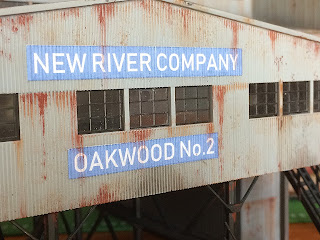We recently got stuck into make the coal loads for our hoppers. We want to be able to load them in at the tipple loaders, run the trains to the Port and unload them there. This will hopefully give a better life like operation on our railroad. We gathered all the hoppers together, and over a few evenings we made them all production line style. We started with the load made from balsawood. We chose to use the carved balsawood method as its easy, reasonably quick and gives the desired look we want.
As there were four different sizes of hopper to make loads for we had to count out each size and make them to fit. We have a mix of Accurail, Atlas, Athearn, and Bachmann hoppers. Each had to be customised for correct depth using blocks glued at each end to support the load to allow it sit level.
We will be making a magnetic wand to allow the operator to remove and place the loads into the hoppers. We tried a small button sized rare earth magnet and this appeared to be good for the lifting of the load. We screwed in a small countersunk screw in the centre of the balsawood load for the magnet to search for...
 |
| Testing the magnet. |
The loads were carved into two or three profiles, some flat topped, some with multiple heaps and some rounded. The loads needed to appear above the top of the hopper sides as they appeared in historic photos.
 |
| A load sitting in an Accurail hopper. |
The loads for my hoppers were then sprayed from a cheap Matt Black pressure pack, making sure the black covered the sides and ends as well as the tops.
 |
PVA wood glue was applied
to the dried black load. |
 |
The glue was spread out as
evenly as possible - but not
on the sides or ends. |
We crushed up real coal and sieved the pieces into three usable grades that we though would look right. A fine grade called "pea", a mid sized grade called "egg" and a larger size called "lump". These sizes are three of the five grades that were to come from tipples in the Appalachians that I had found during my research. The other two were "slack" and "nut" grades.
 |
Seen here with mid sized "egg" grade. The coal was
just sprinkled on from above, the side and ends to cover
as much of the black surface as possible. |
Some close up shots of the completed loads......
 |
| Coal loads with "pea" sized grade and on a multi heaped load base. |
 |
| Coal loads with "egg" sized grade. |
 |
| Coal loads with "lump" sized grade. |
To finalise the loads for handling, we will be coating the underneath of the balsawood loads with paint or sealant to stop them fraying. Nothing worse than seeing bits of brightly coloured balsawood sitting on the hopper edges or the layout.

















































